- Caribbean Travel Advisor
- Advertising
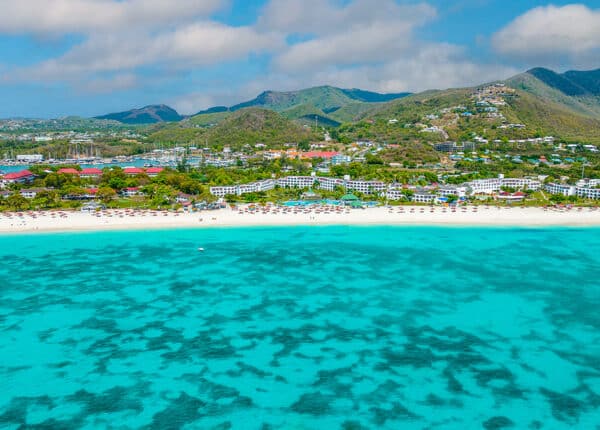

This Is the Best-Value All-Inclusive Vacation in the Caribbean
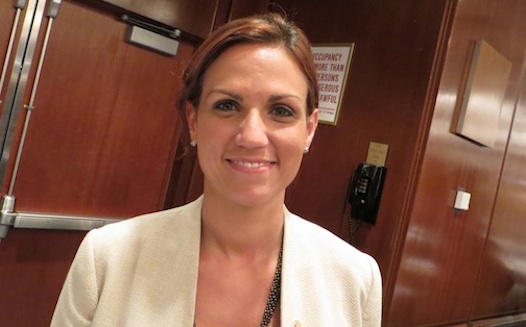
Interview with Haiti Tourism Minister Stephanie Villedrouin on Remaking Haiti’s Brand
By Alexander Britell
Haiti’s tourism sector is beginning again. Two years since the earthquake, new hotels are beginning to pop up, new hospitality students are being trained and destinations like Jacmel are entering the consciousness of international travelers. While it’s a long road ahead for Haiti as it seeks to remake its image abroad, it’s one Tourism Minister Stephanie Villedrouin seems to relish. Villedrouin began her hotel career studying in the Dominican Republic. After returning to Haiti in 2004, she worked at a hotel for five years, then joining the Tourism Association of Haiti as a board member. Next, she advised President Michel Martelly’s office on tourism until eventually being asked to serve as a cabinet minister. To learn more, Caribbean Journal talked to Villedrouin about the growth of new foreign hotels in the country, the development of the local Haitian hotel industry and the future of tourism in Haiti.
Where is Haiti’s tourism sector right now?
We have a new logo that we launched, and it’s the new image of the country. When you try to change the image of the country, you have to start by identifying the country differently. And that’s what we did — we did a whole competition to find the best logo for the country, and it went very well, and now we’re very proud to showcase this new image, with a new sightseeing in Haiti that has never been promoted before. Because unfortunately, it’s always the bad part of Haiti that has been promoted, especially after the earthquake.
How do you see Haiti’s brand changing?
It’s like everybody was waiting on it. Everybody was waiting to see Haiti moving forward and taking the lead. So when we decided to do it, everybody gathered with us and said, “let’s do it.” And they all participated very well. And now it’s already starting to change — I see people using it on their blogs, on their Facebook pages, on Twitter, and all this is important for us, because you need to feel identified with the new logo of the new destination. And where Haiti is now, Haiti has a total of 3,000 rooms. We have clusters all around the country, two clusters in the south, one cluster in the north, one cluster about an hour and a half from Port-au-Prince, and you actually have hotels there. What we’re putting together is to create small packages to attract clients — not in one year, but tomorrow. So we’re starting something, and I have to say that the clientele is accepting very well our new packages. With all of the actions we’re putting in place, we’re very open. We talk out what we’re doing. So people don’t just see the talking but they see action. So we’re going to inaugurate the restoration of the international airport in Port-au-Prince at the end of July. I’m going to have a whole stand of information for tourists, so when visitors come they can find information about where to go, what to do. The idea is to guide the tourists — they need guidance, they need information. My job is to team up with the private sector to give them this information.
How much new hotel development is going on?
We have some very nice hotel developments, especially in Port-au-Prince. We have hotels being built as we speak, opening at the end of this year and at the beginning of next year. You’re going to have the Best Western with 108 rooms, the Occidental Oasis, which is a Spanish brand, the NH, which is also Spanish, you’re going to have the Marriott, which signed with us last November and will start building in December. And Hilton is interested, Choice Hotels is in Jacmel, so it’s interesting to see that from the “mom and pop” hotels we used to have we’re now really entering the professional aspect of it. And for me, it’s important for the image, because the client, when he decides to come to Haiti, and knows that we have a Best Western or an Occidental, it reassures the client that when he arrives he’ll find a good room. And our private sector, the Haitian private sector, did a lot of effort in building nice hotels. They went to take seminars to make sure the quality of the infrastructure was internationally acceptable. So we’re very confident and moving forward, and the idea is to reposition Haiti this year and in the beginning of next year as a destination in the Caribbean. Of course, the idea is to create some regional development with resorts, and we have already identified our two regional tourism poles: one in the north and one in the south. I’m currently working with FONATUR [Mexico’s National Trust of Tourism Development], which will help us with the technical assistance to do our master plan. Because we don’t want to develop the sector without a master plan.
Jacmel seems to be an emerging tourism centre. Where does Jacmel fit within Haiti’s tourism policy?
Jacmel is not only a cultural centre, it has a lot of artisans, and a lot of natural sites around it. It’s a small town, and you really can create nice packages around this town. The government is investing $40 million in Jacmel. We’re going to do the whole historical centre. Because there’s a tourist port that we’re going to reestablish, and we’re really working with Carnival to do a south route. (RCL does the northern route in Labadie) We’re talking to them, and the idea is that when the visitor comes, he can just walk in the historical centre that will have gift shops, restaurants, and really recreate something nice out of Jacmel. What is interesting this time is the government is not only saying that it believes in tourism, but it is investing in tourism. And that, I think, is a great signal for investors, because when they see the government is committed on what it is saying, it means it is welcoming investment. Because we cannot develop a country without the private sector. We need these funds to develop the country, so we’re very open to doing some public and private partnerships to manage the facilities, to manage the airports. We just want results for the population of Haiti.
We’ve seen a number of foreign companies investing in new hotels in Haiti. How do you see the domestic Haitian hotel industry developing?
When the local operators saw the new hotels come in, they also invested in their hotels. So that was a good signal. We have hotels like Kinam, a classic, which is now investing in 100 new rooms in his hotel. We have the Ibo Lele, a 70-year old hotel, which is converting from a standard hotel into a boutique hotel. So I really like the synergy that this new investment brought to Haiti. Because now even the Haitian private sector is saying, “hey, if they’re coming, they’re going to grab part of my market, so I have to work more on my services, I have to work more on what I’m giving to the tourists.” And I think that creates a good energy. One of our challenges is the correct training in human resources. Because Haiti was not really a country that had a hotel industry. It was very artisanal, it was not a real industry. So they never really invested in hotel schools. So there’s only one school that we have in Port-au-Prince that I did a partnership with ITHQ, the hotellerie of Quebec, to renew our curriculum that was completely not updated. So now I have a new curriculum, and I’m really counting on the Haitians that left [the country] to study, and I’m trying to gather them and tell them, “listen, we need your help to return to the country and train your sisters and brothers.” So we’re in that process, and I have five that are coming this summer, because we have a major vocational training that we’re putting in place for current employees in the sector.
Tourism accounts for the largest proportion of GDP in Caribbean economies. What kind of impact can it have on Haiti?
We don’t have the information on the impact yet, because we haven’t had the statistics yet. But we’re studying it. Definitely, it’s a major, major economic base for all of the Caribbean. And what is interesting is that Haiti has the same natural size, the same nice beaches, the same mountains, and one of the things that I could say that adds value is our culture. It’s a very creative, very creative population, with a lot of talent. And they create out of nothing. I know tourists like to come and see not just artisans doing sculptures, but they like to buy the sculptures. Because Haitian arts and crafts are known all over the world now. You have the food, which is excellent — and it’s not just because I’m Haitian. We were colonized by the French, and the French cuisine is delicatesse . So we have the mix of Creole food and the French food. We have music, and our population is a very welcoming population, always with a smile in all the provinces. And we really want to bring tourism to that level. With all the incomes that will bring to our economy, we can actually promote and work on social aspects and the needs of the population. We don’t have to take only for the five years of the [President’s] mandate — we haven to think of Haiti in 2015, in 2050 where we will be.
So where do you see Haiti’s tourism by 2015?
By 2015, Haiti has to be in all of the brochures, all of the tour operators’ brochures, it has to be in all the magazines of the Caribbean. We will be present in all the tourism fairs to continuously promote the country. Because it’s not an end story. You always have to continuously promote the country. I see my country as being a new destination in the Caribbean. We are really looking forward to 3,000 new rooms by 2015, to double our rooms by 2015. So it’s a very reasonable amount. But most importantly is the master plan that we’ll leave. The idea is to give back the structure, to put the structure in place so we can be a new, developed country in 2030.

The Sexiest Beaches in the Caribbean to Visit Right Now
One is a beach with a nightclub-style pool right next door. Another is filled with beach bars — and even has its own au natural corner. Then there’s a beach that’s practically a nonstop party. There are so many things that […]
The Winners of the 2024 Caribbean Green Awards

With almost 20,000 votes, the winners of the Caribbean Green Awards 2024 Presented by E-Finity have been crowned. From state-of-the-art marine conservation projects to hotels that are redefining sustainability, the Green movement has never been stronger in the Caribbean. “This […]
A Low-Key, Lovely Adults-Only Beach Resort in Aruba

When Aruba’s Bucuti & Tara Beach Resort opened in 1987, it made sense for the hotel’s restaurant to be built in the shape of a boat shipwrecked on the sand: while Eagle Beach didn’t exactly resemble a desert island back […]
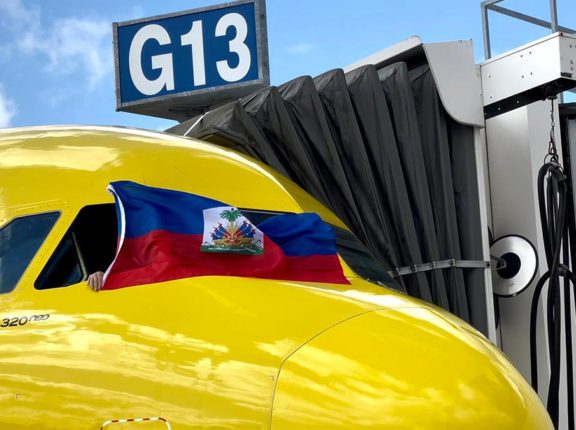
Spirit Relaunches Flights to Cap-Haitien, Haiti
Spirit Airlines has relaunched its flights from Fort Lauderdale to Cap-Haitien on the northern coast of Haiti. The low-cost carrier resumed the service between Fort Lauderdale-Hollywood International Airport and Cap-Haitien International Airport on Dec. 3. The service is the only […]
Eastern Airlines Is Launching Flights to the Dominican Republic

The revived Eastern Airlines is back in the Caribbean. The new iteration of the once-legendary carrier is set to launch expanded Caribbean flights in December with service to Santo Domingo, Dominican Republic. Eastern Airlines will be launching twice-weekly flights from […]
From The Bahamas to Jamaica, The Talking Heads’ Caribbean Love Story
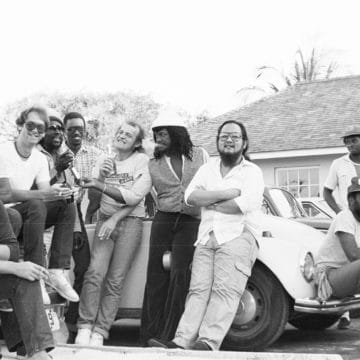
Talking Heads drummer Chris Frantz’s new book, Remain in Love, is a billet-doux to his bandmate and wife of more than 40 years, bassist Tina Weymouth, as well as documenting the couple’s musical journey together — first, as part of […]
Sign up for Caribbean Journal's free newsletter for a daily dose of beaches, hotels, rum and the best Caribbean travel information on the net.
- Share full article
Advertisement
Supported by
In Haiti, Tracing a Paradise Lost

By Peter Kujawinski
- Dec. 4, 2017
Haiti is a fixture in my mind, as permanent as memories of high school graduation or the weekend I first met my wife.
I lived there twice as an American diplomat for a total of four years since 2000, but its hold on me is not a function of time. Of all the countries I lived and worked in, Haiti stood out as the most beautiful, the most colorful and the poorest. It melds French, African and Caribbean cultures into something truly unique, less than two hours from Miami. Yet it also resists easy definition. It is an open, free place filled with secrets.
Today there are conflicting signs about where Haiti is going. The U.N. Security Council decided recently to close down the peacekeeping mission it has maintained in Haiti since 2004.
The U.N. Secretary-General’s final report on the mission concluded: “The many setbacks and challenges notwithstanding, including the disaster caused by the January 2010 earthquake and at least six major hurricanes, substantial headway was made, and today the Haitian people enjoy a considerable degree of security and greater stability.”
The last day of the mission was Oct. 15. (A successor mission will have a much smaller footprint.) Since then, the United States has revoked the temporary protected status of nearly 60,000 Haitians in the country, citing Haiti’s recovery as the reason for doing so.
However, Haiti remains one of the poorest countries in the world, according to the World Bank, with a G.D.P. per capita of $846. Fifty-nine percent of Haitians live under the national poverty line of $2.41 a day. Economic growth is low, and political strife is constant. The State Department “warns U.S. citizens to carefully consider the risks of traveling to Haiti,” an admonition that has been in place for as long as I can remember.
Revisiting Haiti
View Slide Show ›
This November, I returned to Haiti as a tourist, curious to see the country after a five-year absence. I had heard that the highways had improved, and so planned a weeklong road trip, starting in Port-au-Prince before moving on to the southern and northern coasts.
Tourism and Haiti may not seem like they go together, but in the years after World War II, the country belonged to the Caribbean highlight reel. A 1947 New York Times article with the headline “The Pleasures of Haiti” described it as “fiercely independent, riotously colorful, and surprisingly inexpensive” and recommended hotels, bars and places to visit. I found similar articles from the 1930s through the end of the 1950s, all extolling Haiti’s exceptional culture and many attractions. Cruise ships and planes unloaded tourists in Port-au-Prince, where they would stroll through downtown and buy souvenirs in this “shoppers’ paradise,” according to an article from 1956 .
It has been several generations since Haiti was a major tourist destination, but it may become one again. International hotel chains have arrived, and the number of flights to the country has increased substantially. For years, American Airlines was the only U.S. carrier flying in or out but now JetBlue, Spirit and Delta also serve Port-au-Prince, and American has begun a daily flight to Cap Haitien.
When I arrived this fall, my friend Pierre Esperance picked me up at the Port-au-Prince airport. I’ve known Pierre since 2000, a year after he was attacked and almost assassinated due to his occupation as Haiti’s most prominent human rights activist. Despite the attack and other threats, he’s still in the same line of work.
Pierre is optimistic, even ebullient, yet also a cleareyed observer of Haiti’s dysfunction. That evening, when I asked him to assess the country’s current situation, his amiable disposition shifted to neutral. Haiti was in an uncertain place, he said, facing a mix of progress and setbacks. Road infrastructure had improved, as had the police, but Haiti’s institutions were much too weak and the political will to support them did not exist. The justice and prison sectors were particularly problematic.
We chatted on his terrace, filled with pink, white, red, and orange bougainvillea, and waited for the electricity to come on. Pierre’s house gets power only a few hours every day, and he is one of the lucky ones. It is a stark reminder that in some ways Haiti has progressed very little. Pierre was born on nearby Gonâve Island, and grew up without any electricity during the dictatorship of Jean-Claude Duvalier.
Near the end of our evening together, I asked Pierre to compare that dictatorship to the current moment. He laughed and looked surprised. “It’s night and day,” he said. “Because today we have liberty of expression. Under Duvalier’s regime, you could not come here to sit and talk, because there’d be people listening to us and they’d come to arrest us. But today you can walk down the street and speak however you want.”
I TOURED Port-au-Prince the next day. It was a national holiday, and traffic was light. I visited a few of the capital’s interesting sights: the bustling, rebuilt Iron Market, the Port-au-Prince Cemetery, a warren of snaking pathways around built-up tombs, and the metalworks area in neighboring Croix des Bouquets, where for generations Haitians have transformed the tops of oil drums and other pieces of metal into ornate masterpieces.
The area improved since I last lived there, with recently paved streets and some new construction. The camps for earthquake victims, which used to cover every open space, were gone. Despite these improvements, though, it was clear that Port-au-Prince was not going to be a tourism hot spot for a long time to come. It is too difficult to move around, and security concerns dominate. If tourism ever returns to Haiti in a meaningful way, it will likely happen first in the provinces.
For a road trip into the Haiti that exists outside of its capital, I turned to the driver I trust most in the world, Frantz Newbold. I met him in 2000, when he had started work as a driver for the U.S. Embassy, and I had just arrived for a two-year assignment.
Frantz, the photographer Chris Miller and I started our road trip by heading south toward Saint Louis du Sud, a town on Haiti’s southern coast. Inspired by the Bradt Haiti guide, I was looking for old forts.
We found the first one, Fort Olivier, on the edge of a promontory near town, in a pleasant open area dotted with palm trees. By itself, it would be a worthy stop on any tourist excursion. The real masterpiece, though, was Fort Anglais, which occupied an entire island just offshore. We bargained with local fishermen to take us there, and climbed into their rickety dugout canoe, literally a floating mango tree trunk with its insides scooped out. It was brightly painted in the red and blue of the Haitian flag.
Chris and I spent hours clambering through the fort, which was thickly covered in underbrush, banyan trees and guarded by suspicious goats. Built by the French in 1702, Fort Anglais was a spectacular find, the type of place that if properly restored, would undoubtedly be a top destination. There was even the beginning of tourist infrastructure, in the form of two concrete piers built to connect Fort Anglais to the mainland. For the time being, though, it sat in the middle of a gorgeous, white sand-lined Caribbean bay, largely ignored.
While clawing through the fort’s underbrush, I suddenly came upon a thick drapery of banyan roots covering the entrance to an intact room. Blue-tailed lizards congregated on the roots and I spent a few minutes just looking at them. When I finally pushed into the room, I discovered an alcove on the far side. Using my phone’s flashlight, I realized that the alcove was actually a tunnel leading down and to the left. For a moment, I was an excited child. I climbed into the alcove and started down the tunnel.
As I did so, I heard the frantic protests of thousands of insects. I shone the flashlight onto the walls. They were covered with large insects that moved crablike across the glistening stone. They looked like hybrid spider-crickets, and they were on the ceiling too. Some darted across my shoes. I cringed and tried not to shriek.
I crept forward but the walls narrowed and the remaining space filled with even more insects. I held the flashlight out and saw the passageway curve down into another room. I wanted so badly to go, but I could almost feel the spider-crickets dropping onto my neck and crawling under my T-shirt. In the battle between exciting adventure and large, noisy insects, the insects won. I retreated back into the sun.
To erase my skin’s memory of this encounter, I walked to the sea-facing side of the island and found a spit of perfectly white sand. Remains of the fort’s exterior walls stuck out of the ankle-high water, which was warm and crystal-clear. The beach was perfect, or at least it would be once the washed-up plastic bottles were removed.
I snorkeled for a half-hour, finding coral and small fish, and glancing back now and then at the fort. This was an ideal area for tourism: perfect sand, warm water, and a massive, mysterious fort evoking pirates and buried treasure. Its future, however, was as uncertain as Haiti’s.
We continued exploring Haiti over the next two days as we raced across the southern coast. We found time to root around one of the many caves scattered throughout the mountainous country. Most have a cultural and historical resonance. Taíno Indians, the first inhabitants in Haiti, as well as runaway slaves, used the caves to hide from their oppressors.
Haiti’s best known cave and one of its largest is Grotte Marie Jeanne. It has several levels, and certain areas remain unexplored. Guides from the nearby town of Port-à-Piment take visitors into deep areas, but many easily accessible caverns are on the surface. While clambering around one of them, we came across an underground chamber dotted with bottles of Barbancourt rum. Apparently, the cave is still used.
We also stopped by the town of Jacmel, one of Haiti’s top tourist destinations, mainly for the festivities and parades that culminate with the Feb. 4 carnival. Jacmel’s walkable downtown is filled with buildings that evoke its 19th- and 20th-century role as a commercial and shipping hub.
The minister of tourism envisions Jacmel becoming a cruise ship stop too. It isn’t hard to imagine the old pretty streets downtown and along the seaside boardwalk filled with tourists. Although some buildings in this historic commercial and shipping hub required work, some appeared to need nothing more than a coat of paint.
Jacmel was an alluring a mix of history, culture, beaches and beauty. Nearby, it even boasts Haiti’s first and only surf club.
Surf Haiti is several miles outside of Jacmel, in the commune of Cayes-Jacmel. The thatched roof, beachfront restaurant called Le Cam’s, where I met members of Surf Haiti, looked the part of a surfing hub. I was there to meet Lionel André Pierre, born in New York to Haitian parents. When he and his family moved to Jacmel several years ago, he fell in with the tiny surfing community that had started because of the presence of several international aid workers with a passion for surfing. The workers found local children already “surfing on driftwood and plywood,” he said. They gave the children surfing instruction and organized them, which led to the creation of Surf Haiti.
Today, Surf Haiti is the country’s only member of the International Surf Association, which functions as surfing’s governing body. Some in Surf Haiti dream of competing in the 2020 Summer Olympics in Tokyo, when surfing will make its debut as an Olympic sport. For the time being, though, the group is focused on more prosaic opportunities. Members teach surf and swimming lessons, and also run an eco guesthouse nearby. Surf Haiti gets about 5 to 10 requests for lessons a month, a small number but enough to imagine what larger-scale tourism could bring. An hourlong surf lesson costs between 8 and 15 US dollars, much more than Haiti’s daily minimum wage of 290 gourdes ($4.55) for eight hours of work in hotels, restaurants and agriculture.
Also soaking in Le Cam’s relaxed Sunday atmosphere was Ericka Bourraine, director of the Ministry of Tourism in the Southeast Department. Like Lionel, Bourraine was born in the United States to Haitian parents and decided to return to Haiti in recent years. Her office supports major events each trimester, including a summer surfing and music festival in collaboration with Surf Haiti. She also is encouraging the development of excursions, like a day trip along the “route du café” to show how Haitian coffee is grown, harvested and prepared.
Ms. Bourraine said the goal is to provide vacation options to potential tourists like the Haitian diaspora, although some fear their country’s insecurity. Bourraine said she had heard those in the generation before her say, “I’ll never step foot in Haiti again. I’ll never go back to that place.” However, Ms. Bourraine said the generation after that is very interested in seeing the country. “It’s just about making the connections and making those people feel safe and feel brave enough to venture out,” she said.
The waves weren’t high enough to surf on, so late that afternoon, I floated in the water just offshore. A deep blue sky was spotted with lazy clouds. All along the shoreline stood a thick forest of trees that extended out over the ocean. Nearby, a few children were skipping rocks, and people sat on the beach in twos and threes. I walked back to the hotel.
There was no electricity, so I took a shower in darkening shadow. When I walked onto the hotel’s veranda, the abundant tropical flowers glowed in the last rays of sun.
WE SET OFF on an epic drive the next day from Cayes-Jacmel on the southern coast to Cap-Haitian on the northern coast. The distance is relatively modest in absolute terms, about 193 miles. That this journey seems so intimidating is due to two factors -— Haiti’s mountainous interior and the lack of any bypass to avoid Port-au-Prince.
It ended up taking over 10 hours, through the mountains along the southern coast, down into the broad plain of Port-au-Prince, then due north until we climbed into the mountains of Haiti’s northern claw.
We passed through forest stippled with thousands of shades of green. Thick clouds swirled around the car and hugged the road. At times the roads were wide and recently paved, the rust-red earth neatly graded and stacked on each side. In other moments, I gripped the dashboard with white knuckles. Weaving through Port-au-Prince, we took rutted gravel roads to avoid a demonstration. When we finally arrived in Cap Haitien, Frantz drove through torrential rain that poured across the streets and disabled several trucks. This was Haiti from south to north, its problems and promise on clear display.
That evening, we unwound on the veranda of Cormier Plage , a beach hotel I had visited during my first assignment to the country. It is tucked between Cap Haitien and Labadee, a private beach resort closed-off peninsula leased by Royal Caribbean as a day stop for many of its cruise ships. At dinner, we sat in comfortable lounge chairs and listened to waves breaking on the beach only feet away. It was so dark that the lights above us shone like beacons. In the aftermath of that day’s drive, I felt optimistic and wondered out loud whether Haiti had turned a corner.
But Frantz shook his head doubtfully. Like Pierre Esperance and others of his generation, Frantz would not speculate about the future. They had witnessed so much: Jean-Claude Duvalier’s dictatorship, coups, armed gangs during Jean-Bertrand Aristide’s presidency, U.N. peacekeepers who brought cholera , all of it a lather of misery and instability that stretched over decades. I understood their reluctance to make predictions about their country.
To end my week, I visited Sans Souci Palace and the Citadel, a Unesco World Heritage complex and arguably Haiti’s first tourist attraction. Built in the early 18th century by Haiti’s founders, Unesco says the palace and the Citadel far above it “serve as universal symbols of liberty, being the first monuments to be constructed by black slaves who had gained their freedom.”
Only skeletal walls remain of Sans Souci Palace, which was severely damaged by an earthquake in 1842. However, the Citadel still looks every bit as impressive as the statistics cited about it -— largest fortress in the Western Hemisphere, filled with original, French, English and Haitian built cannons, walls 13 feet thick and 131 feet tall. It took 20,000 people 14 years to build it.
This complex has been a tourist attraction for a long time. In 1937, The New York Times announced a new steamship service that would make the Citadel more accessible. “The main offering of the new tourist service is the chance of visiting the famous citadel, La Ferriere, sometimes rated among the ten wonders of the world.”
My tour guide was Nicolas Antoine, a 62-year-old who has been showing people around the complex for 25 years. When he began, Antoine said, the Citadel was in poor shape, abandoned, with trees growing on and inside its walls. The task of ferrying up tourists was given to sure-footed donkeys climbing through scrub. His description reminded me of the current condition of Fort Anglais on the southern coast, another impressive site in a country filled with them.
The complex was truly spectacular, a testament to Haiti’s world-changing struggle for independence. When we arrived, it was late morning, blindingly hot and humid. I stepped across a crumbling wall of Sans Souci Palace into a field of tall grass. Chattering from the village of Milot below rose through the air. Facing me, on the other side of the village, was a steep mountain slope covered with rubber, mahogany, mango and palm trees. I greedily drank in the view. Haiti’s struggle with deforestation is well known, making these types of unadulterated visions of nature all the more precious.
Turning in the other direction, I noticed a young man sitting nearby, intently staring at a piece of paper, his lips moving as if in prayer. I asked him what he was doing. He was studying for an economics test. In the distance stood a large school building, and I heard the chant of students repeating lessons.
This moment occupied my thoughts on the climb up to the Citadel and while walking through the fortress’s cool, mist-wreathed corridors. Finally, I realized why it resonated so strongly. I had witnessed a normal Tuesday morning: school, studying for a test, daily chatter, guides, shopkeepers looking for tourists, and tourists looking at the sights. It could have been any tourist destination anywhere in the world. But this time, it was in Haiti.
Like many who have filtered through the country, I held memories of Haiti that were complicated, any happiness diluted by the things I lived through. But near the end of my road trip, in a grassy field alongside Sans Souci Palace, the power of these memories receded a bit. A new narrative began, in which it wasn’t brave or unusual to see Haiti’s sights, to eat its food, to interact with the people I came across, and to be a tourist. It was normal.
At the Cap Haitien airport the next day, the waiting area was new and well maintained. As I waited for the flight, I thought about the last moments of our road trip and about saying goodbye to Frantz. We had stood in the airport parking lot under the shade of a big yellow school bus and ate lunch his mother had prepared for us -— Creole sauce, pan-fried fish, pickled vegetables, and Haitian rice. It was so delicious that I can still taste it. When we were done, he drove me to the departure area. I gave Frantz a picture I had recently come across. It was the two of us 17 years ago, on one of our first road trips through the country. Saying goodbye felt like the end of an era, one that expressed itself through silence rather than words.
In the airport waiting area, the lights flickered and went out. The fast descending tropical sun threw broad shadows across the walls, but unlike past moments, I did not assume the worst. I figured the lights would come back on, and soon they did.
Peter Kujawinski is a frequent contributor to the Travel section.
- Mobile Apps
- Subscribe Now

Secondary Menu
- Art & Leisure
- Classifieds
Task force established to help recovery of Haiti’s tourism from quake

Janet Silvera, Senior Gleaner Writer
A tourism resilience, recovery and sustainability task force has been established to render assistance to Haiti's tourism industry arising from the impact of the recent devastating 7.2 earthquake.
Jamaica's Global Tourism Resilience and Crisis Management Centre (GTRCMC) is leading the process.
A preliminary assessment of immediate needs is estimated at US$150 million, with water being the most urgent at this time, said Tourism Minister Edmund Bartlett, who heads the task force and is the co-founder of the centre.
Bartlett indicated that there has been a strong response from tourism partners to the work of the task force.
Headlines Delivered to Your Inbox
Toiletries, bedding, medication and food head a long list of necessities, which Bartlett said several partners have pledged to provide.
“The mandate of the Global Tourism Resilience Crisis Management Centre is to respond to disruptions which impact tourism and tourism activities and stakeholders globally,” he said, noting that the quake has upended several tourism stakeholders and workers in Haiti.
Among other things, the task force will seek to engage with key global tourism players – business, government and civil society – to identify solutions to facilitate Haiti's immediate-to-long term tourism product.
“The swiftness with which this earthquake has devastated sections of Haiti has made it imperative that we act quickly to help restore some level of normalcy. We also recognise that for a stronger recovery, we need to identify what solutions will be necessary to mitigate the negative impact of seismic disruptions on the Haitian tourism product and tourism-dependent stakeholders,” said Bartlett.
The task force includes Haiti's tourism minister, Kassandra Francois, chairman of the Caribbean Tourism Organisation and Minister of Tourism for Barbados, Senator Lisa Cummings, tourism minister for Saudi Arabia Ahmed Khateeb, president of the Jamaica Hotel and Tourist Association, Clifton Reader, Sandals Foundation's Adam Stewart, Caribbean Hotel and Tourist Association's Nicola Madden Greig, Professor Lloyd Waller and Global Rescue's Dan Richards.
The Private Sector Organisation of Jamaica (PSOJ), Frank Elias Rainieri, chairman and founder of Grupo Puntacana, Dionisio James D'Aguila, Minister of Tourism and Aviation for the Bahamas, and Wilfred Baghaloo, Managing Director for Deals, Southern Cluster for PwC Tax complete the group.
“The organisations that will be collaborating on this task force will prove to be extremely beneficial to the recovery efforts for Haiti,” said Waller, who is the executive director of the tourism crisis centre.
Follow The Gleaner on Twitter and Instagram @JamaicaGleaner and on Facebook @GleanerJamaica. Send us a message on WhatsApp at 1-876-499-0169 or email us at [email protected] or [email protected] .
- «Boulder blocking section of Mount Rosser in St Catherine
- St Thomas woman charged following altercation at hospital »
View the discussion thread.
Haiti Takes Major Steps To Bring Tourists Back To The Country
Haiti’s newly appointed tourism minister, Marie-Christine Stephenson, is planning on increasing the tourism rate in her country one major step at a time.
Isha Thorpe • Sep 27, 2018

Haiti’s newly appointed tourism minister, Marie-Christine Stephenson , is planning on increasing the tourism rate in her country one major step at a time. At the beginning of the decade, the Caribbean nation experienced a growth of visiting tourists who couldn’t get enough of experiencing the country.
Travel Pulse reports that 420,000 people visited in 2013 and in 2015, that number jumped to 516,000. However, over the past few years, tourism rates have dropped dramatically. In 2016, only 476,000 tourists visited the country. That number worsened the following year, in which 421,000 tourists visited Haiti.
That’s where Minister Stephenson comes in. Since being appointed to her position on Sept. 18, she’s shown that she’s ready to act swiftly to attract people from all around the world to her country. “We will multiply partnerships between domestic and foreign players,” she said in a statement. “With their help, major tourist projects will be revived.”
Not only does Minister Stephenson plan on strengthening the tourism sector, but she wants to improve Haiti’s hotel industry “training infrastructures,” too. Travel Pulse adds that this action will help at “‘creating an institute of tourism and hospitality, facilitating tourism sector investment through ‘standardization of procedures and cohesion of public institutions,’ and the creation of a tourist credit program.”
Though tourism has decreased in Haiti, many are still attracted to the country as a cruise stop. In 2015, 644,000 visitors stopped by on cruise ships. That number jumped in 2017 to 737,000. Haiti, though many parts are impoverished, is still a beautiful country with a rich history and culture. Now that Minister Stephenson is in charge of improving tourism, many more people — who will hopefully come from all across the world — will be able to see that.
Subscribe to travel noire
Get more travel content
Subscribe to Travel Noire, a free daily newsletter that features the best of travel, destinations, and guides to the cities you love from a new point of view — yours.
By subscribing to this newsletter, you agree to our terms of service and privacy policy.
Popular posts
Trending stories in world travel
Meet the members of a transitional council tasked with choosing new leaders for beleaguered Haiti
PORT-AU-PRINCE, Haiti — A transitional council tasked with bringing political stability to Haiti was installed Thursday in the capital of this Caribbean country, which is marred by gang violence and soaring hunger and poverty.
The freshly sworn-in council will appoint a new prime minister and Cabinet, and create a road map to eventually hold long-awaited general elections. Its mandate expires Feb. 7, 2026, when a new president would be sworn in.
The council is made up of eight men and one woman. Seven members have voting powers.
Here’s a glimpse at who they are:
VOTING MEMBERS
Smith Agustin — Former ambassador to the Dominican Republic, legal expert and sociologist. He is tied to the EDE/RED political party. He recently replaced former nominee Dominique Dupuy, a UNESCO ambassador, who resigned following political attacks and death threats.
Dr. Louis Gérald Gilles — The former senator will be the representative of the signatories of the Dec. 21 agreement within the council. That group is associated with outgoing prime minister Ariel Henry. Gilles is linked to the New Orientation United to Free Haiti party.
Fritz Alphonse Jean — Economist and president of INHOPP (Haitian Institute of Public Policies.) He is a former central bank governor and ex-interim prime minister. He has frequently travelled abroad seeking support from Haitian communities. He is affiliated with a civil-society group known as the Montana Accord.
Edgard Leblanc Fils — Former president of Haiti’s Senate from 1995 to 2000. Fils finished second to Jocelerme Privert in the parliamentary indirect presidential election of February 2016. He is general coordinator of the Organization of the Struggling People. He represents the January 30 political group.
Laurent Saint-Cyr — President of the American Chamber of Commerce in Haiti and executive director at Haiti’s Alternative Insurance Company.
Emmanuel Vertilaire — The judge of the Cap-Haïtien court is a specialist in criminology and anti-corruption efforts. He is linked to the Pitit Desalin political party and the National Peasants’ Network.
Leslie Voltaire — Veteran politician who was a member of the administrations of Jean-Bertrand Aristide and René Preval. His influence dates back more than 30 years. He is a former minister of education and of Haitians living abroad. He ran for the presidency himself in 2010, but claimed later the vote was rigged against him. He is linked to the Fanmi Lavalas party.
Régine Abraham — Agronomist and Cabinet director at the Ministry of the Environment. She rose to the position after the resignation of René Jean-Jumeau due to his alleged involvement in the squandering of PetroCaribe funds. She has worked for the World Bank and the European Union.
Frinel Joseph — The evangelical pastor became prominent as treasurer of Haiti’s electoral council, representing the country’s religions. Four years later, in 2020, the Conference of Haitian Pastors accused him of being too focused on his personal political objectives at the council. He and another seven members of the council resigned due to local pressure. The pastor is also famous at home for his lectures on spirituality.

Haitian PM tenders resignation after Jamaica talks
- Medium Text
PRESIDENTIAL COUNCIL
More mission funds.
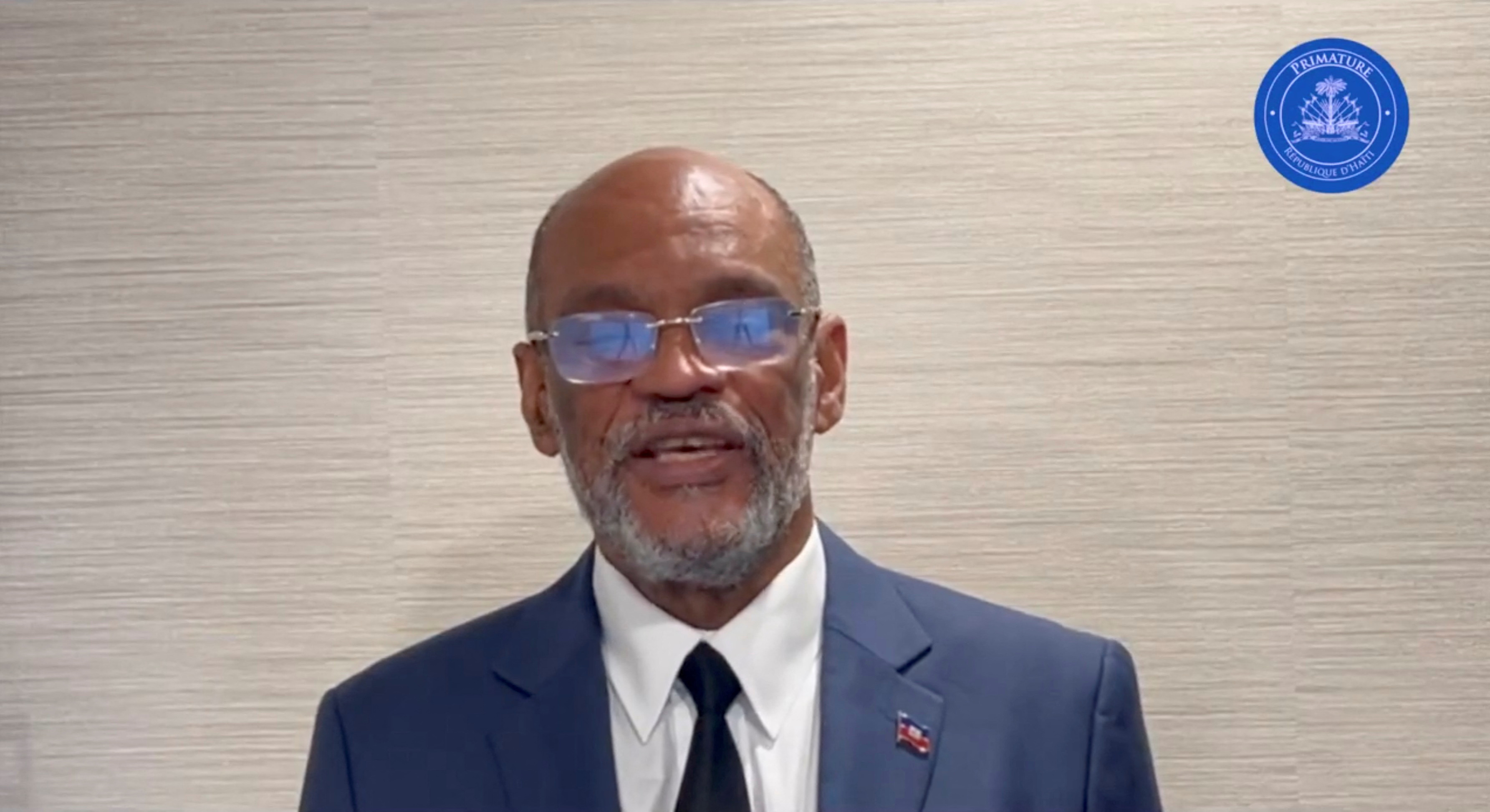
'A BLOODY REVOLUTION'
Sign up here.
Reporting by Daphne Psaledakis in Kingston; Harold Isaac, Steven Aristil and Ralph Tedy Erol in Port-au-Prince; Robertson S. Henry in Kingstown; Brendan O'Boyle and Sarah Morland in Mexico City; Additional reporting by Simon Lewis in Washington, Brendan O'Brien in Chicago and Michelle Nichols in New York; Editing by Bernadette Baum, Chizu Nomiyama, Aurora Ellis, Bill Berkrot, Richard Chang, Lincoln Feast and Gerry Doyle
Our Standards: The Thomson Reuters Trust Principles. New Tab , opens new tab

Thomson Reuters
Daphne Psaledakis is a foreign policy correspondent based in Washington, D.C., where she covers U.S. sanctions, Africa and the State Department. She has covered the rollout of U.S. sanctions on Russia after Moscow’s invasion of Ukraine, Washington’s efforts to enforce its sanctions and the U.S. response to the conflict in Ethiopia, among other issues. She previously covered European Union politics and energy and climate policy for Reuters in Brussels as part of an Overseas Press Club Foundation fellowship in 2019. Daphne holds a Bachelor of Journalism in Print and Digital News and a Bachelor of Arts in International Studies.
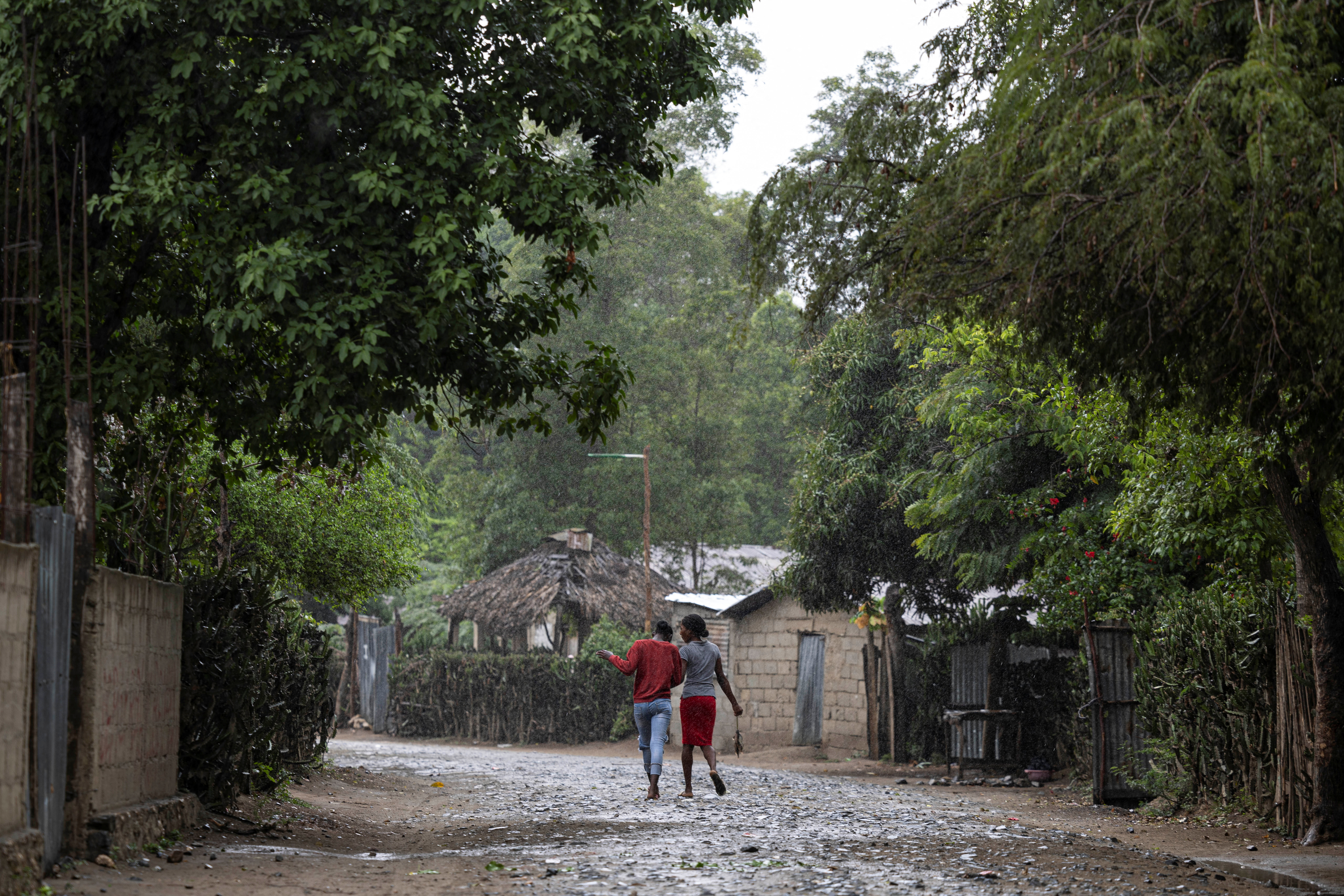
World Chevron

Pope visits Venice prison at start of day trip to lagoon city
Pope Francis flew into Venice on Sunday for his first trip of the year, testing his mobility and resilience after a number of health scares in recent months.
Russia's air defence systems destroyed 17 drones launched by Ukraine over its territory, Russia's defence ministry said on Sunday, with a regional official saying the attack targeted an oil storage facility in the Kaluga region.
A Russian drone attack heavily damaged a hotel in Ukraine's southern city of Mykolaiv, the governor of the broader Mykolaiv region said, with Russia's RIA news agency reporting the hotel housed English-speaking mercenaries fighting in Ukraine.


HOME ABOUT US ADVERTISING CONTACT
Last update on April 27, 2024, 12:00 pm
Tourism March 14, 2024 | 2:09 pm
Haiti unrest no impact on Dominican tourism: Collado

Santo Domingo.- Tourism Minister David Collado assured on Thursday that the situation in neighboring Haiti has not affected the tourism sector in the Dominican Republic.
“To this day, the unfortunate situation that our neighboring country of Haiti is going through has not affected the tourism sector in the Dominican Republic,” the official said.
While leading the presentation of the tourism sector’s results for February, Collado said that Dominican Foreign Minister Roberto Álvarez is the one who has to respond about the airlift proposed by the United Nations (UN) to help Haiti.
It is recalled that the Prime Minister of Haiti, Ariel Henry, resigned from his position, amid the wave of violence in the Caribbean country, reported the President of Guyana and current President of the Caribbean Community (Caricom), Irfaan Ali, after an extraordinary session on the situation in Haiti with representatives from several countries in Jamaica.
Former Haitian rebel leader Guy Philippe rejected the agreement of the Caribbean Community (Caricom), which seeks to create a presidential council to lead a transition and hold elections in Haiti.
Philippe considered that “the international community, through Caricom, has decided to ridicule the Haitian people.”
Record numbers
According to the Minister of Tourism, 1,057,216 visitors arrived in the Dominican Republic in February, marking the figure as a “record.” Collado specified that 755,832 tourists came by air and 301,384 by cruise ship.
I beg to differ. Arrivals may be what they are, but people are becoming afraid to leave resorts. This is clearly obvious in my business and observations around Punta Cana. The number of emails I receive expressing concern is on the rise, Leaving the resort leaves real “people money” in the country. Staying on the resort puts it in the government’s hand and those who own the companies in other countries.
But is it safe? Leaving the resort is always dangerous, but now I guess danger and fear have increased. Are the hotel authorities taking security measures?
April 26, 2024 | 9:23 am
Pro Consumidor clears rice brands of harmful metals

April 22, 2024 | 1:21 pm
Ney Arias Lora Hospital and CMD appeal ruling

April 15, 2024 | 8:40 am
Cyber attack exposes Covid-19 vaccination records in Dominican Republic

April 9, 2024 | 3:12 pm
Dominican Republic moves to implement neonatal screening

April 9, 2024 | 2:27 pm
Médico Express leading medical tourism certification

April 9, 2024 | 10:57 am
Proactive measures against Dengue in the Dominican Republic

- ADVERTISING
- Privacy Policies
- Cookies Policy
DominicanToday.com - The Dominican Republic News Source in English
Av. Abraham Lincoln N° 452 Local 220B, Plaza La Francesa, Piantini, Santo Domingo
Tel. (809) 334-6386
Choose your language

Welcome to Haiti
A land with a soul
Plan your holiday to Haiti
Haiti up-close
When is the best time to visit Haiti?
Haiti Up Close
7 Haitian Artists to Follow on Instagram Now
With Art X Ayiti’s help, we've rounded up seven unique Instagram accounts highlighting Haitian artists here in Haiti and across the Haitian diaspora.
Food & Drink
Where to Eat in Cap-Haïtien
Here are the best restaurants in Cap-Haïtien, according to a local. Don't miss this one local ingredient you have to try!
How to Attend a Vodou Ceremony in Haiti
Skulls, sequins and gunpowder smoke - here’s a glimpse inside a modern Haitian Vodou ceremony. Find out how to attend and what to expect.
People gathered at a Vodou ceremony
Photo: Pierre Michel Jean
Looking for some cool things to do?
Meet the haitian cyberpunk artists of grand rue.
A Grand Rue collective upcycling junk into Vodou-infused cyberpunk sculptures,
Where to go dancing in Port-au-Prince
With the sun sinking into the horizon over Bay du
Peer into the Studio of Haitian Artist Maxan Jean Louis
Visit the home studio of Maxan Jean Louis, one of

Explore Haiti’s Contemporary Art Scene at Villa Kalewès
Kalewès is creole for “hangout” and Villa Kalewès, a Petion-Ville
Jump into the Cobalt Waters of Bassin Bleu
Bassin Bleu is a series of four cobalt-blue pools connected
Haitian Cuisine: A Culinary Map of Haiti
Come with us on a lip-smacking journey as we map
Hike to Historic Fort Jacques
High in the dense mountains just outside Port-au-Prince, you'll find
Scale the peak of Pic La Selle
Hispaniola is one of the most mountainous islands in the
Jump into Saut-Mathurine – Haiti’s Biggest Waterfall
The south coast is full of hidden treasures waiting to
Ride the Waves: A Surfer’s Guide to Haiti’s Prime Spots
Discover the exhilarating world of surfing in Haiti. From the
Adventure awaits
Travellers exploring the Kaskad Pichon waterfalls, Haiti
Photo: Franck Fontain
Summer activities and tips!
Food & drink
Have you tried these 7 Haitian summer flavors?
Destinations
Jacmel City Guide
Things to do
Gelée Beach
Jacmel is Haiti's second-largest city. Read our guide to find
Close to Les Cayes in southern Haiti, Gelée Beach offers
This 200 year-old fortress site is cared for by the
Have You Tried These 7 Haitian Summer Flavours?
Whet your appetite and test your knowledge of Caribbean cuisine
Travel to Haiti for less
Aerogare Guy Malary, Port-au-Prince, Haiti
Photo: Ricardo Lartigue
Our Instagram
@visithaiti, subscribe to our newsletter.
Get more travel inspiration, tips and exclusive offers sent straight to your inbox
I would like to get VisitHaiti newsletters in my inbox
Paradise for Your Inbox
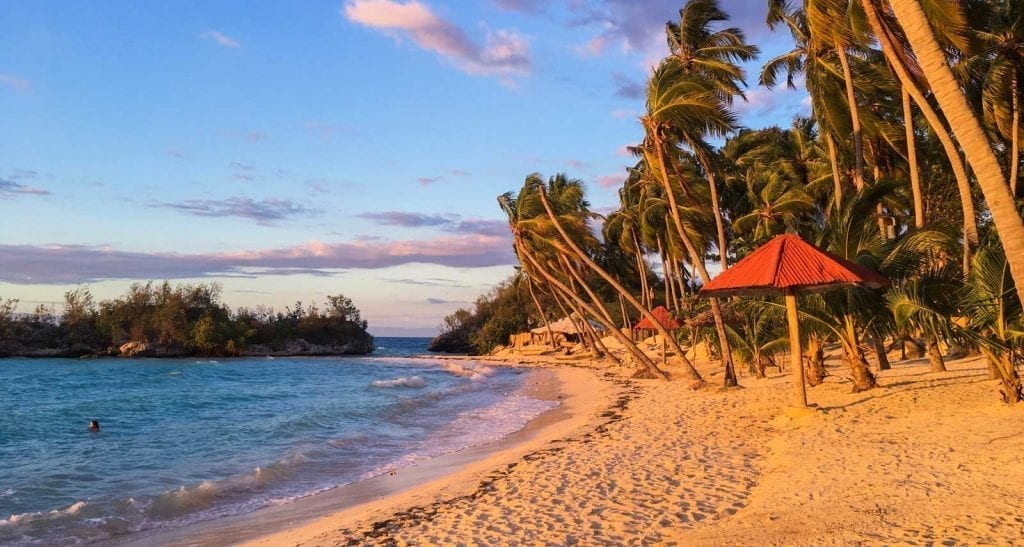
Subscribe to our newsletter for the best monthly stories and insider guides about Haiti!
I would like to get Visit Haiti newsletters in my inbox
A transitional council is installed in Haiti, and an interim prime minister is appointed for the embattled country
PORT-AU-PRINCE, Haiti -- A transitional council is installed in Haiti , and an interim prime minister is appointed for the embattled country.
Top Stories

The Power of US: Could eFuels help bridge the gap between gas and electric cars?
- Apr 26, 4:46 PM

Golden retriever steals the show as wedding ring bearer
- Apr 26, 11:42 AM

Ex-official told investigators Trump had 'no standing declassification order'
- Apr 25, 6:55 PM

'Coat hanger' could unlock storage room where Trump stored classified docs: Witness
- Apr 27, 10:26 AM

Tornado threat continues after 4 injured, 83 reports of tornadoes
- Apr 27, 6:01 PM
ABC News Live
24/7 coverage of breaking news and live events
- Skip to main content
- Keyboard shortcuts for audio player
Haiti's Prime Minister Ariel Henry has resigned as a transitional council takes over

Eyder Peralta

Michel Patrick Boisvert (center), who was named interim prime minister by outgoing Prime Minister Ariel Henry, attends the swearing-in ceremony of the transitional council tasked with selecting Haiti's new prime minister and cabinet, in Port-au-Prince, Haiti. Ramon Espinosa/AP hide caption
Michel Patrick Boisvert (center), who was named interim prime minister by outgoing Prime Minister Ariel Henry, attends the swearing-in ceremony of the transitional council tasked with selecting Haiti's new prime minister and cabinet, in Port-au-Prince, Haiti.
Haiti's de facto prime minister, Ariel Henry, has resigned and a new transitional council has been sworn in in the capital of Port-au-Prince. Finance Minister Michel Patrick Boisvert has been appointed as the interim prime minister.
The nine-person transitional council, including seven who have voting powers, was sworn in during a small ceremony in the grounds of the National Palace, with few invited guests. Local news outlets published video of the moment in which the members of the council promised to protect constitution — as gunfire can be heard in the distance.
Première salutations officielles pour les membres du Conseil Présidentiel de Transition au palais national ce jeudi 25 avril 2024 pic.twitter.com/tqMS7KmWdS — Frantz Duval (@Frantzduval) April 25, 2024
Gangs in Haiti had vowed to topple the government and keep the transitional council from taking power. The criminal gangs control most of the capital and have attacked the airport, police stations and other government installations, effectively cutting the capital off from the outside world for months now.

3 things to know about the current crisis in Haiti
According to the United Nations ' humanitarian office, there are more than 90,000 displaced people in the capital alone. The head of UNICEF, Catherine Russell, told the U.N. Security Council on Monday that 3 million children need humanitarian assistance. "The situation in Haiti is catastrophic, and it grows worse by the day," she said.

A portrait of Haitians trying to survive without a government
Haiti's now former prime minister, Henry, is currently in Los Angeles — unable to return to Haiti since leaving earlier this year. Henry had been on an official visit to Kenya trying to secure an international peacekeeping force, but the swell of gang-led violence in the Haitian capital meant he was unable to return. In March, he announced his intention to step down once a transitional council had been appointed.
The transitional council is expected to pave the way for an international peacekeeping force.
- Ariel Henry
- Haitian politics

Haiti Prime Minister Ariel Henry resigns as new government takes shape
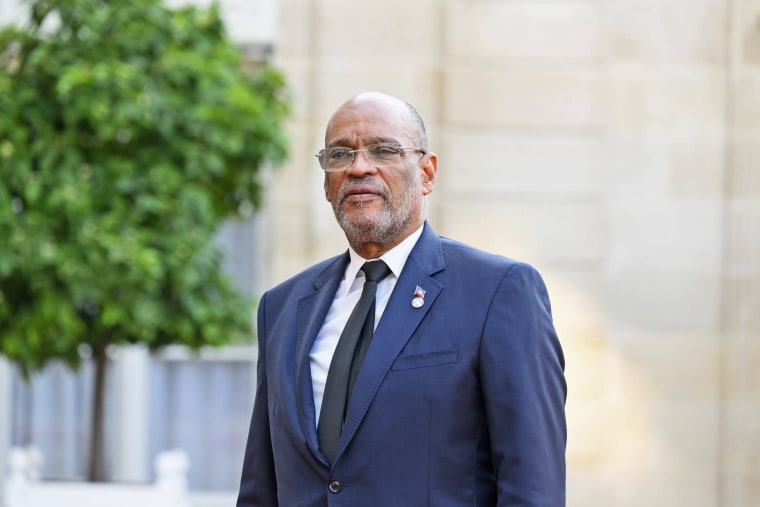
Haiti’s prime minister, Ariel Henry, officially resigned Thursday as a transitional government is sworn in, and a new leader, Michel Patrick Boisvert, will become the interim president.
Boisvert, working with a nine-member transitional presidential council, will try to quell the gang-fueled turmoil that has taken over Port-au-Prince.
Boisvert became Haiti’s minister of economy and finance in 2020, according to a government website. He was the director of tax inspection from 2010 to 2018 before he became director of the Ministry of Economy and Finance. He has a master’s degree in economic policy management from the University of Auvergne in France. He also has studied at the University of Port-au-Prince and the State University of Haiti.
In March, Henry said he would officially resign once a transitional government was put in place.
The presidential transition council will be installed in a ceremony Thursday morning on the outskirts of Port-au-Prince.
Henry’s office noted in a statement that the ceremony will be hosted at the prime minister’s official office, known as Villa d’Accueil, not the National Palace downtown, which has come under repeated fire from armed gangs in recent days.
Earlier Wednesday, powerful militia leader Jimmy “ Barbeque ” Chérizier insisted that talks over Haiti’s political future must include the armed groups.
The installation of the presidential transition council that will take over from Henry has been delayed for weeks amid intense behind-the-scenes jockeying for control among various political factions.
Establishing the council is seen as a key first step toward ending the chaos that has engulfed the Caribbean nation, largely blamed on rival gangs fighting over turf, especially in the capital, as well as mostly absent state institutions.
Michelle Garcia is the editorial director of NBCBLK

Haiti’s prime minister resigns as council sworn in to lead political transition in violence-ravaged nation
H aiti’s Prime Minister Ariel Henry announced his resignation on Thursday, handing power over to a transitional council that will seek to gain control of the violence-ravaged nation.
Henry wrote in his resignation letter dated Wednesday that, “given the current state of affairs,” the time was right for him to step down. “We have served the nation in difficult times. I thank everyone who had the courage to face such challenges with me,” he said.
Haiti has been overrun by chaos and gang violence in recent weeks, with criminal groups attacking government structures and social order on the brink of collapse.
The Caribbean nation’s finance minister Michael Patrick Boisvert has been appointed as interim prime minister until a new government is formed, according to an X post from Henry’s office on Thursday.
“Haiti, our country, is at a crossroads in the search for solutions to overcome this multidimensional political crisis, that has lasted for so long, and the consequences of which are detrimental to the population, to property, and both public and private infrastructures,” Boisvert said at the swearing-in ceremony at the Prime Minister’s office, Villa d’Accueil.
A transitional council, composed of seven voting members and two non-voting observers, has been tasked with the responsibility of naming a new prime minister and cabinet. The committee will exercise certain presidential powers until a new president-elect is inaugurated, which must take place no later than February 7, 2026.
Henry announced in March his plans to step down once a decision on the country’s future leadership was made, and the transitional council was set up soon after.
The Caribbean Community and Common Market (CARICOM) welcomed the council’s formation in a statement earlier this month, hoping it would mark “a new beginning for Haiti.”
The United Nations Secretary General’s spokesperson Stephane Dujarric also welcomed the news and called for the swift deployment of a multinational security mission to support Haiti’s police.
Since February, attacks by an insurgent alliance of gangs in the capital Port-au-Prince mean the city’s international airport and seaport have ceased to function, breaking vital supply lines of food and aid and triggering an exodus of evacuation flights for foreign nationals.
With the city virtually cut off from the outside world, hospitals have been vandalized while warehouses and containers storing food and essential supplies have been broken into as the social fabric frays.
According to the UN, nearly 5 million people in Haiti are suffering from acute food insecurity – defined as when a person’s inability to consume adequate food poses immediate danger to their lives or livelihoods.
“This is the worst humanitarian crisis in Haiti since the 2010 earthquake. I don’t think that’s sunk in,” Jean-Martin Bauer, the World Food Programme’s country director for Haiti, told CNN last month.
The UN human rights office meanwhile described sexual violence in Haiti as “severely underreported and largely unpunished,” in a harrowing report that documented cases of rape and forced sexual relations with gang members, as well surging levels of gang violence in the country.
CNN’s Hira Humayun and Caitlin Stephen Hu contributed reporting
For more CNN news and newsletters create an account at CNN.com
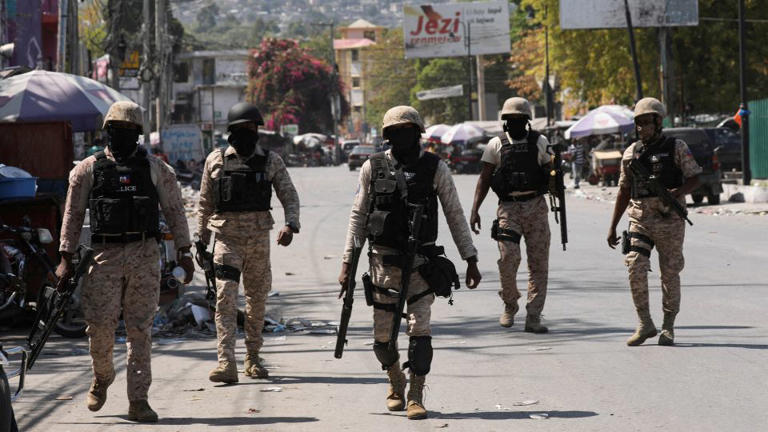

With fear and hope, Haiti warily welcomes new…
Share this:.
- Click to share on Facebook (Opens in new window)
- Click to share on X (Opens in new window)
Daily e-Edition
Evening e-Edition
- Entertainment
- Restaurants, Food & Drink
With fear and hope, Haiti warily welcomes new governing council as gang-ravaged country seeks peace

By DÁNICA COTO (Associated Press)
PORT-AU-PRINCE, Haiti (AP) — Haiti opened a new political chapter Thursday with the installation of a transitional council tasked to pick a new prime minister and prepare for eventual presidential elections, in hopes of quelling spiraling gang violence that has killed thousands in the Caribbean country.
Ariel Henry, the prime minister who had been locked out of the country for the past couple of months due to the violence, cleared the way for the transition by presenting his resignation in a letter signed in Los Angeles.
The document was released Thursday in Haiti on the same day as the new transitional council was sworn in to choose a new prime minister and Cabinet. Henry’s outgoing Cabinet chose Economy and Finance Minister Michel Patrick Boisvert as interim prime minister in the meantime. It was not immediately clear when the transitional council would name its own choice for interim prime minister.
The council was officially sworn in at the National Palace in downtown Port-au-Prince early Thursday as the pop of sporadic gunfire erupted nearby, prompting some officials to look around the room. The council had been urged to seek a safer venue because gangs have launched daily attacks in the area .
Addressing a crowded and sweaty room in the prime minister’s office hours later in Pétion-Ville, Boisvert said that Haiti’s crisis had gone on too long and that the country now found itself at a crossroads. The members of the transitional council stood behind him, and before him, the country’s top police and military officials as well as ambassadors and well-known politicians.
“After long months of debate … a solution has been found,” Boisvert said. “Today is an important day in the life of our dear republic.”
He called the transitional council a “Haitian solution” and directing his remarks toward them, Boisvert wished them success, adding, “You are to lead the country to peace, to economic and social recovery, to sacred union, to participation.”
After the speeches, the soft clink of glasses echoed in the room as attendees served champagne flutes toasted with a somber “To Haiti.”
The council was installed earlier Thursday, more than a month after Caribbean leaders announced its creation following an emergency meeting to tackle Haiti’s spiraling crisis . Gunfire heard as the council was sworn in at the National Palace prompted worried looks.
The nine-member council, of which seven have voting powers, is also expected to help set the agenda of a new Cabinet. It will also appoint a provisional electoral commission, a requirement before elections can take place, and establish a national security council.
The council’s non-renewable mandate expires Feb. 7, 2026, at which date a new president is scheduled to be sworn in.
The council members are Emmanuel Vertilaire for Petit Desalin, a party led by former senator and presidential candidate Jean-Charles Moïse; Smith Augustin for EDE/RED, a party led by former Prime Minister Claude Joseph; Fritz Alphonse Jean for the Montana Accord, a group of civil society leaders, political parties and others; Leslie Voltaire for Fanmi Lavalas, the party of former President Jean-Bertrand Aristide; Louis Gérald Gilles for the Dec. 21 coalition that backs former Prime Minister Ariel Henry; Edgard Leblanc Fils for the Jan. 30 Collective, which represents parties including that of former President Michel Martelly; and Laurent Saint-Cyr for the private sector.
The two non-voting seats were awarded to Frinel Joseph, a pastor, and Régine Abraham, a former World Bank and Haitian government official.
Augustin, one of the council’s voting members, said that it was unclear if the council would decide to keep Boisvert on as interim prime minister or choose another. He said it would be discussed in the coming days. “The crisis is unsustainable,” he said.
Abraham, a nonvoting member, recalled the July 2021 assassination of President Jovenel Moïse, explaining that “that violence had a devastating impact.”
Abraham said that gangs now controlled most of Port-au-Prince, tens of thousands of the capital’s residents have been displaced by violence and more than 900 schools in the capital have been forced to close.
“The population of Port-au-Prince has literally been taken hostage,” she said.
Gangs launched coordinated attacks that began on Feb. 29 in the capital, Port-au-Prince, and surrounding areas. They burned police stations and hospitals, opened fire on the main international airport that has remained closed since early March and stormed Haiti’s two biggest prisons, releasing more than 4,000 inmates. Gangs also have severed access to Haiti’s biggest port.
The onslaught began while Prime Minister Henry was on an official visit to Kenya to push for a U.N.-backed deployment of a police force from the East African country.
In his resignation letter, Henry said Haiti would be reborn. “We served the nation in difficult times,” he wrote. “I sympathize with the losses and suffering endured by our compatriots during this period.”
He remains locked out of Haiti.
“Port-au-Prince is now almost completely sealed off because of air, sea and land blockades,” Catherine Russell, UNICEF’s director, said earlier this week.
The international community has urged the council to prioritize Haiti’s widespread insecurity. Even before the attacks began, gangs already controlled 80% of Port-au-Prince. More than 2,500 people were killed or injured from January to March, up by more than 50% compared with the same period last year, according to a recent U.N. report.
“It is impossible to overstate the increase in gang activity across Port-au-Prince and beyond, the deterioration of the human rights situation and the deepening of the humanitarian crisis,” María Isabel Salvador, the U.N. special envoy for Haiti, said at a U.N. Security Council meeting on Monday.
On Thursday, some Haitians said they didn’t know that the country had a new prime minister and a transitional council in place. Others warily celebrated the new leadership.
“We don’t ask for much. We just want to move about freely,” said Guismet Obaubourg, owner of a dusty convenience story who lamented that his merchandise has been stuck at the port for two months.
As for Boisvert: “I don’t know him personally, but as long as he does what he’s supposed to do, provide security to the country, that’s all that matters.”
In attendance at Boisvert’s swearing in Thursday was Dennis Hankins, the newly installed U.S. ambassador. He said Thursday’s events were an important step for Haiti.
“In crisis, the Haitians are able to do tremendous things, so we’re here to help them,” Hankins said. “We won’t be the solution, but hopefully we will be part of helping those finding the solution.”
As part of that, he said the U.S. government was working to enforce export controls on weapons, many of which have found their way to Haiti, fueling the violence.
“The fact that many of the arms that come here are from the United States is indisputable and that has a direct impact,” Hankins said. “It is something we recognize is a contributing factor to instability.”
Nearly 100,000 people have fled the capital in search of safer cities and towns since the attacks began. Tens of thousands of others left homeless after gangs torched their homes are now living in crowded, makeshift shelters across Port-au-Prince that only have one or two toilets for hundreds of residents.
At the United Nations Thursday, World Food Program Deputy Executive Director Carl Skau said Haiti is suffering from a security, political and humanitarian crisis that is causing acute food insecurity for some 5 million people, or about half the population. The U.N. defines that as “when a person’s inability to consume adequate food puts their lives or livelihoods in immediate danger.”
“The situation is dramatic,” Skau told reporters. “Devastating crisis, a massive humanitarian impact, the worst humanitarian situation in Haiti since the 2010 earthquake .”
Rachel Pierre, a 39-year-old mother of four children, living in one of the capital’s makeshift shelters, said, “Although I’m physically here, it feels like I’m dead.”
“There is no food or water. Sometimes I have nothing to give the kids,” she said as her 14-month-old suckled on her deflated breast.
Many Haitians are angry and exhausted at what their lives have become and blame gangs for their situation.
“They’re the ones who sent us here,” said Chesnel Joseph, a 46-year-old math teacher whose school closed because of the violence and who has become the shelter’s informal director. “They mistreat us. They kill us. They burn our homes.”
Follow AP’s coverage of Latin America and the Caribbean at https://apnews.com/hub/latin-america
More in News

Sunshine and dry weather forecast for Central Florida on Saturday

SUBSCRIBER ONLY
Science | spacex knocks out 1st of pair of space coast launches for the weekend.

Pictures: Pro-Palestine demonstrators protest at UCF

UCF students rally for Palestinians, the latest in nationwide campus divestment protests
Haiti Prime Minister Ariel Henry resigns, transitional council takes power
Haiti enters a new phase aimed at stemming its spiralling political and security crisis, but the future is uncertain.
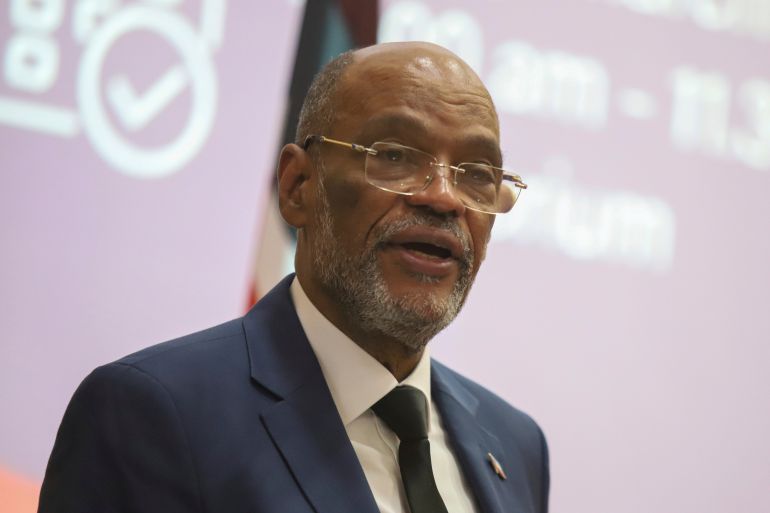
Haitian Prime Minister Ariel Henry has resigned , paving the way for a transitional council to lead the embattled country.
In a letter posted to social media on Thursday, Henry said his administration had “served the nation in difficult times”. The letter was dated Wednesday.
Keep reading
Who are haiti’s gangs and what do they want all you need to know, haiti’s pm tenders resignation as country descends into chaos, photos: haiti’s gangs unleash new attacks on upscale port-au-prince.
The transitional council was officially installed on Thursday. The outgoing cabinet said that, pending the formation of a new government, Economy Minister Michel Patrick Boisvert has been appointed as interim prime minister.
An alliance of the country’s powerful gangs began a coordinated attack on the capital city of Port-au-Prince at the end of February. That coincided with Henry’s visit to Kenya in support of a United Nations-backed security force that the East African country had agreed to deploy to Haiti.
Amid the violence, Ariel agreed to resign last month and has not returned to Haiti. CBS News has reported that he has been protected by the United States Secret Service while abroad.
The nine-member transitional council, where seven members will have voting powers, is expected to help set the agenda of a new cabinet. It will also appoint a provisional electoral commission, which will be required before elections planned for 2026 can take place. They are also set to establish a national security council.
While gang leaders had called on Henry to resign, they voiced anger over their exclusion from transitional negotiations, and it remains unclear how they will respond to the new council.
For its part, the international community has urged the council to prioritise Haiti’s widespread insecurity.
Before the latest attacks began, gangs had already controlled 80 percent of Port-au-Prince. The number of Haitians killed in early 2024 increased by more than 50 percent compared with the same period last year, according to a recent United Nations report.
Meanwhile, about 360,000 Haitians remain internally displaced, with gang violence forcing 95,000 people to flee the capital and pushing five million into “acute hunger”, according to the UN.
Henry was never directly elected. Instead, he was chosen for the prime minister post by Haitian President Jovenel Moise shortly before Moise was assassinated in 2021, and came to power with the backing of the US and other Western countries.
But many rights observers have been wary about what comes next in a country that has seen decades of spiralling crises fuelled by corrupt leaders, failed state institutions, poverty, gang violence, and an international community, led by the US, whose interventions in domestic politics are widely unpopular with Haitians.
As a result, many Haitians remain wary of any foreign involvement in Haiti today, saying that it will only add to the chaos. Nevertheless, several top human rights advocates have said Haitian national police are ill-equipped to stem the violence.
For its part, Kenya had paused its plans to deploy a security force to Haiti until the transitional council took power although it remains unclear if that is still the case.

COMMENTS
Her first term as the Minister of Tourism of Haiti was from 20 October 2011 to 2 April 2014. Rebranded as the Minister of Tourism and Creative Industries, Madame Villedrouin was re-confirmed to a second term on 2 April 2014 and served until 23 March 2016. During her tenure, Haiti inaugurated its first Tourism Promotion Office.
The Ministry of Tourism is a ministry of the Government of Haiti. This ministry is responsible for tourist attractions and accommodations for travelers, along with playing an integral role in the Prime Minister's Cabinet. This page was last edited on 15 December 2022, at ...
Tourism minister Cassandra Francois discussed the current situation in Haiti and laid out tourism strategies and initiatives for the long term. Travel to Haiti: Current challenges, long-term goals ...
By Alexander Britell. In June 2012, Caribbean Journal spoke to Haiti Tourism Minister Stephanie Villedrouin about her plans to grow Haiti's largely undeveloped tourism sector into something far ...
By: Caribbean Journal Staff - August 26, 2021. An International task force has been established to help respond to the immediate and long-term needs of tourism in Haiti. The Jamaica-based Global ...
Haiti's tourism sector is beginning again. New hotels are beginning to pop up and destinations like Jacmel are entering international travelers' consciousness. ... Interview with Haiti Tourism ...
However, Haiti remains one of the poorest countries in the world, according to the World Bank, with a G.D.P. per capita of $846. Fifty-nine percent of Haitians live under the national poverty line ...
PORT-AU-PRINCE, Haiti — If Stephanie Villedrouin, Haiti's minister of tourism, has her way, this star-crossed country will emerge as a tourist destination offering not only its music and ...
The project will fast-forward a recent expansion of tourism across Haiti, and establish the country as major Caribbean leisure destination, said Stephanie Villedrouin, Haiti's tourism minister. "The project is important for the whole island," she said.
Tourism in Haiti is an industry that generated just under a million arrivals in 2012, and is typically one of the main sources of revenue for the nation. With its favorable climate, second-longest coastline of beaches, and most mountainous ranges in the Caribbean, waterfalls, caves, colonial architecture and distinct cultural history, Haiti has had its history as an attractive destination for ...
Send us a message on WhatsApp at 1-876-499-0169 or email us at [email protected] or [email protected]. A tourism resilience, recovery and sustainability task force has been established to render assistance to Haiti's tourism industry arising from the impact of the recent devastating 7.2 earthquake.
Haiti's newly appointed tourism minister, Marie-Christine Stephenson, is planning on increasing the tourism rate in her country one major step at a time. At the beginning of the decade, the Caribbean nation experienced a growth of visiting tourists who couldn't get enough of experiencing the country.
Haiti's newly named tourism minister will be challenged to resume the strong visitor arrivals growth the destination achieved earlier this decade. Marie-Christine Stephenson's immediate role will include reviving the tourism sector based on comparative advantages offered by the country, said Jean-Henry Céant, Haiti's prime minister last week ...
Luz Kurta Cassandra François, the Minister of Tourism who participated in Quito, Ecuador, along with twenty other Ministers of Tourism from the Caribbean and the Americas, at the 68th of the ...
Finally, the Haitian Minister of Tourism pointed out that "the tourism potential of Haiti today is located in the north, where we have the country's historical and cultural treasure. This other facet of Haiti will allow tourists to share the country's history. Finally, after 10 years, Fitur sees Haiti again and this participation is a ...
At the same time, the Minister met, Friday, January 20, 2023, the Ambassador of France in Haiti, Fabrice Mauriès, the President of the Alliance Française, Ms. Chantal Laroche and notable Capois ...
Ministère du Tourisme d'Haïti, Port-au-Prince. 219,928 likes · 28 talking about this · 9 were here. Byenvini sou paj Ministè Touris Ayiti a Bienvenue à la page du Ministère du Tourisme d'Haïti....
Interim Prime Minister Michel Patrick Boisvert, fifth from left, poses for a group photo with members of a transitional council tasked with selecting a new prime minister and cabinet, in Port-au ...
Haiti's unelected prime minister, Ariel Henry, will step down once a transition council and temporary replacement have been appointed, he said on Monday, after leading the Caribbean country since ...
<p>Santo Domingo.- Tourism Minister David Collado assured on Thursday that the situation in neighboring Haiti has not affected the tourism sector in the Dominican Republic. "To this day, the unfortunate situation that our neighboring country of Haiti is going through has not affected the tourism sector in the Dominican Republic," the official said. While leading the presentation of the ...
Adventure awaits. Exploring hidden waterfalls in Jacmel, meandering through the March de Fer in Port-au-Prince and trekking up to the largest fortress in the western hemisphere, La Citadelle La Ferriere, Haiti has so much to offer the more adventurous traveller. Read more. Travellers exploring the Kaskad Pichon waterfalls, Haiti.
A transitional council is installed in Haiti, and an interim prime minister is appointed for the embattled country. By The Associated Press. April 25, 2024, 10:50 AM. 1:09.
Haiti's de facto prime minister, Ariel Henry, has formally stepped down and a new transitional council has been sworn in. Finance chief Michel Patrick Boisvert is the new interim prime minister.
Ministry of Culture and Communication: Emmelie Prophète: Port-au-Prince, Haiti Ministry of Tourism: Luz Kurta Cassandra François 8, Rue Legitimate (Champs-de-Mars), Port-au-Prince, Haiti Ministry of Agriculture, Natural Resources and Rural Development: Charlot Bredy Route Nationale No. 1, Damien, Port-au-Prince, Haiti Ministry of Social ...
A delegation led by the Minister of Tourism, K. Cassandra François participated last week in Jamaica in the Caribbean Tourism Summit 2023, organized by the Global Center for Tourism Resilience ...
Haiti's prime minister, Ariel Henry, officially resigned Thursday as a transitional government is sworn in, and a new leader, Michel Patrick Boisvert, will become the interim president.
Haiti's Prime Minister Ariel Henry announced his resignation on Thursday, handing power over to a transitional council that will seek to gain control of the violence-ravaged nation.
Ariel Henry has resigned as prime minister of Haiti, paving the way for a new government to take power. The country has been wracked by gang violence that killed or injured more than 2,500 people ...
Haitian Prime Minister Ariel Henry has resigned, paving the way for a transitional council to lead the embattled country. In a letter posted to social media on Thursday, Henry said his ...
Pages in category "Tourism ministers of Haiti" This category contains only the following page. This list may not reflect recent changes. V. Stéphanie Villedrouin This page was last edited on 12 April 2022, at 19:09 (UTC). Text is available under the Creative Commons ...